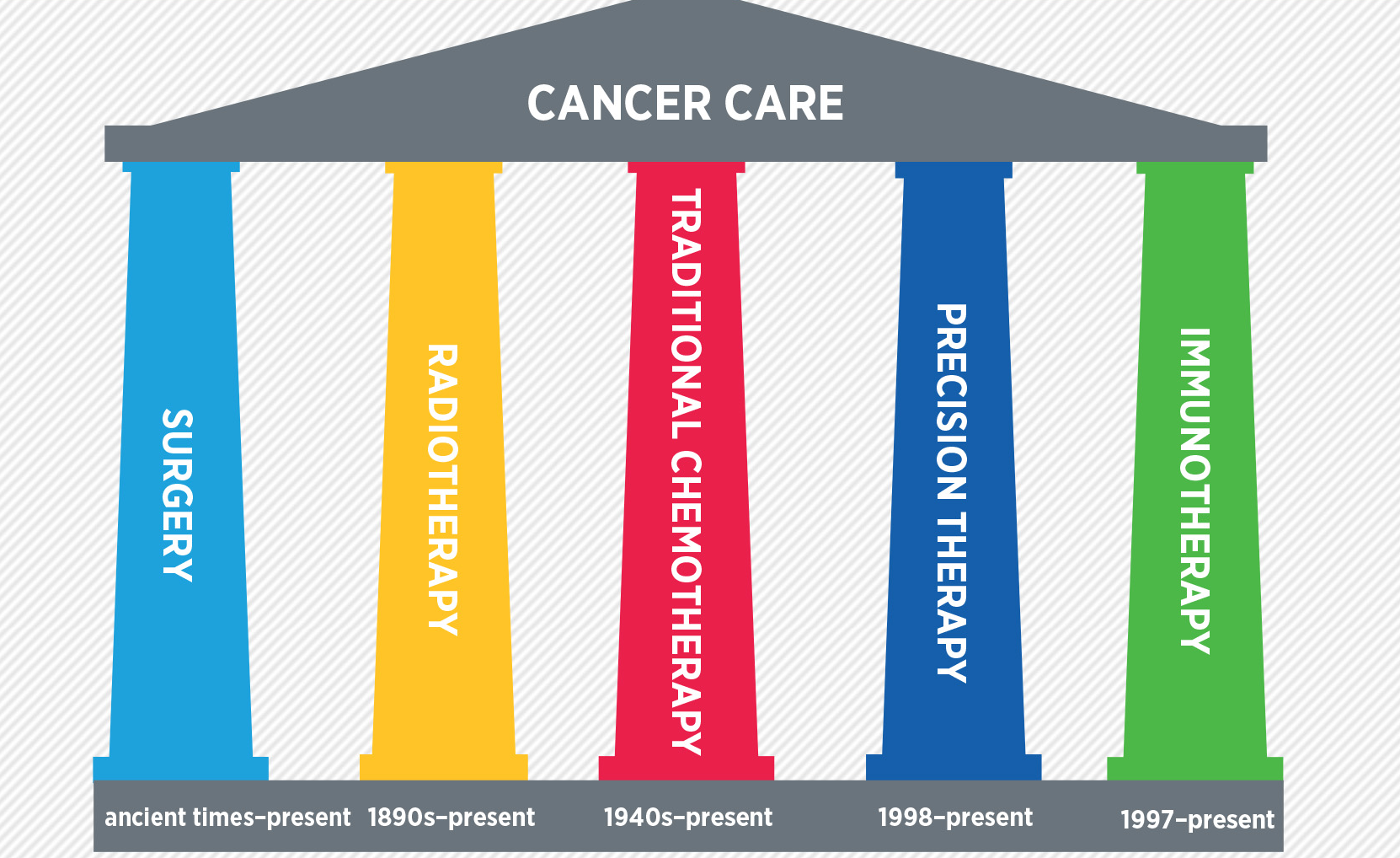
Cancer therapy will be combination therapy
March 17, 2016Immunotherapy (IT) has changed — and will continue to change — cancer treatment. Although only about 25% of patients who receive IT have a response, when patients do respond to treatment, the response is nothing short of amazing. Patients who just 5 years ago had a 10% chance of survival of over 5 years are now 10 years cancer free with no indication of recurrence. I personally know two people who have undergone adaptive cell transfer (treatment where a patients own immune cells are taken from the body, grown in the lab and modified to produce a response, then injected back into the body where they are recognized by the immune system and used to attack and kill the tumor cells), sometimes called CAR-T treatment . These two are cancer free and have been for over 6 years. Without immunotherapy, most likely neither would be here today.
Scientists have shown repeatedly that using just one modality (just surgery, or chemotherapy, or radiation, or immunotherapy) is not enough. It is (and will be) the combination of these different modalities that will produce a sustained and lasting response in the most number of people. There needs to be research to understand how these different methods work synergistically to produce an even greater response. Scientists and science policy experts need to use resources wisely to produce the therapies that will benefit the greatest number of patients. This includes treatment with combination therapy and the collection of standardized data to understand how these systems work together.
Immunotherapy has now been called the fifth pillar of treatment for cancer. This adds to the more traditional options including radiation, surgery, chemotherapy, and targeted therapy. No pillar alone holds up the roof to keep the house intact. It is the interaction between all of them that keep the house in good working order. To extend the analogy then, it is the combination of all the modalities that will benefit the patient maximally.
So, for all of the policy makers thinking about funding or research or personalized medicine, keep in mind that no one modality alone is enough – and combination of multiple pillars will benefit patients the most.
photo from the AACR Cancer Progress Report 2015 found at aacr.org